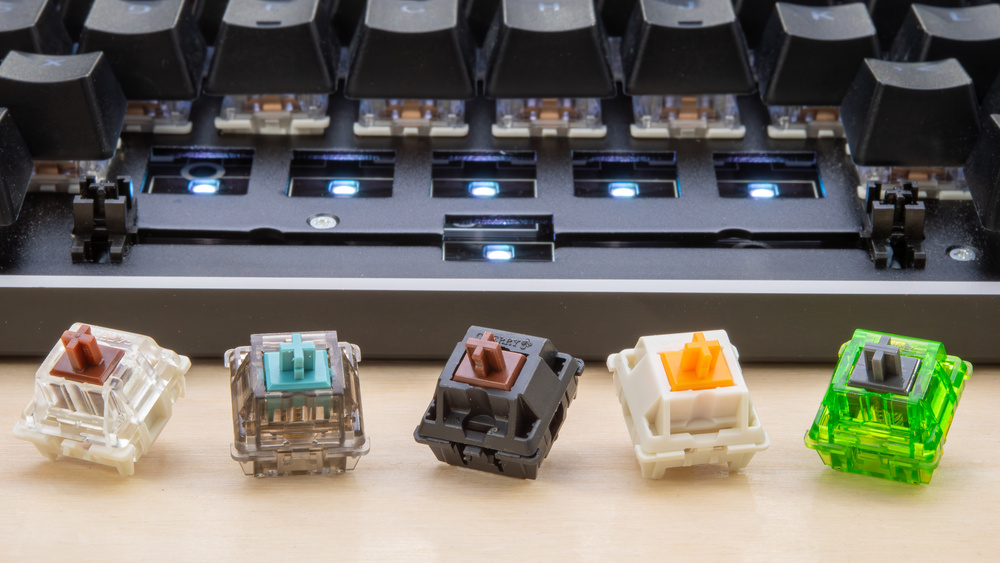Explore the best tactile switches for a responsive typing experience.
Discovering the Advantages of Tactile Changes for Your Next Project
Tactile buttons, identified by their obvious comments, are critical for boosting customer interactions in technology. These elements not just validate input via physical experience yet also assist in procedure in atmospheres where acoustic or aesthetic hints want. As sectors significantly focus on straightforward user interfaces, the adoption of tactile buttons throughout different industries-- from consumer electronics to commercial equipment-- benefits factor to consider. To understand their complete possibility, one must explore both their functional advantages and diverse applications.

Recognizing Tactile Switches Over: How They Function and Their Kinds

These buttons are readily available in various types, including dome, fallen leave, and pill. Dome switches, which use a rubber dome to give resistance, are prominent for their durability and cost-effectiveness. Leaf buttons, on the other hand, feature a flat, spring-like device that supplies a sharper click. Pill buttons are understood for their portable dimension and are often utilized in gadgets with space restraints. Each type uses distinct tactical reactions customized to particular application requirements and customer choices.
The Role of Tactile Responses in Individual Experience
Customer experience is dramatically improved by responsive feedback, which acts as a vital bridge between the device and its customer. This form of responses is critical in atmospheres where visual or acoustic cues might be much less effective or totally missing. Tactile buttons, by their actual nature, provide a physical reaction to individual actions, confirming inputs with a recognizable experience. This not only enhances the accuracy of interactions but also accelerates the individual's capacity to complete jobs by minimizing the demand for aesthetic verification.
In the realm of ease of access, tactile feedback plays a critical function. Therefore, responsive feedback is fundamental in creating user-friendly and effective user experiences (tactile switches).
Contrasting Tactile Changes With Various Other Sorts Of Switches
While responsive switches supply clear-cut feedback that helps in availability and user self-confidence, it is vital to analyze just how they pile up versus other sorts of switches utilized in electronic tools. Linear buttons, for circumstances, give a smooth keystroke without the tactile bump, which can be more suitable for jobs requiring rapid key presses, such as pc gaming. Nonetheless, they do not have the distinctive responses that helps stop inputting mistakes obvious in responsive buttons.
On the other hand, clicky buttons, comparable to tactile versions, supply audible feedback. Comparatively, responsive buttons strike a balance between the silent operation of direct buttons and the noisy assurance of clicky switches, making them versatile for both loud and quiet setups.
Practical Applications of Tactile Switches in Various Tasks
Countless modern-day electronic devices integrate tactile buttons due to their reputable responses and sites easy to use interface. These elements are especially widespread in gadgets calling for exact customer control. Customer electronics like key-boards, remote controls, and gaming controllers employ tactile switches to boost the customer experience by offering instantaneous tactile comments upon actuation. This feedback guarantees customers of their click to read more input enrollment, which is crucial in high-speed pc gaming or information access jobs.
Additionally, responsive switches are located in various industrial applications. They are made use of in manufacturing tools panels and portable diagnostic tools where operators gain from clear operational feedback during equipment handling. Medical devices also make use of tactile buttons, adding to their safety and effectiveness. These switches allow healthcare experts to operate tools swiftly and with accuracy, critical in emergency situation and surgical setups. Thus, responsive buttons show indispensable across a wide spectrum of industries, providing both capability and dependability.
Tips for Deciding On and Integrating Tactile Switches in Your Styles
When selecting responsive buttons for numerous layout tasks, it is vital to think about several essential elements to ensure optimal efficiency and assimilation. Small styles might require smaller sized buttons, which could influence the responsive feedback and resilience.
Furthermore, the environmental conditions where the tool will operate are critical. For jobs exposed to moisture or dirt, selecting switches with greater IP scores to endure such components is suggested. Assimilation ease need to be examined. useful content The button needs to be suitable with the existing circuit style and placing needs. Making use of switches with pre-soldered leads or those that offer clear soldering standards can simplify the assembly procedure, ensuring a reliable and reliable assimilation into the end product.
Conclusion
